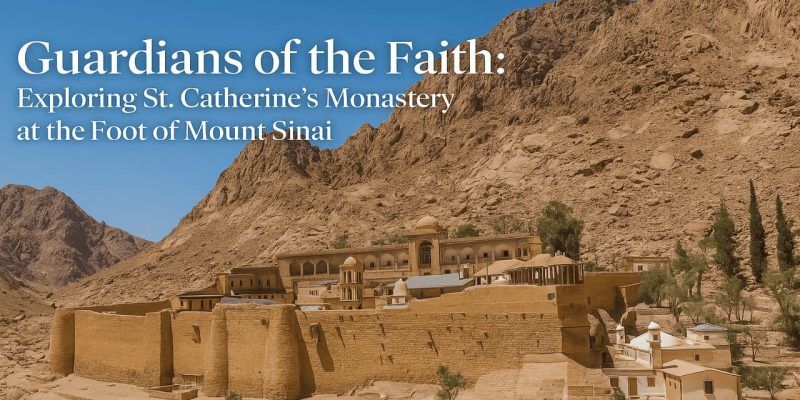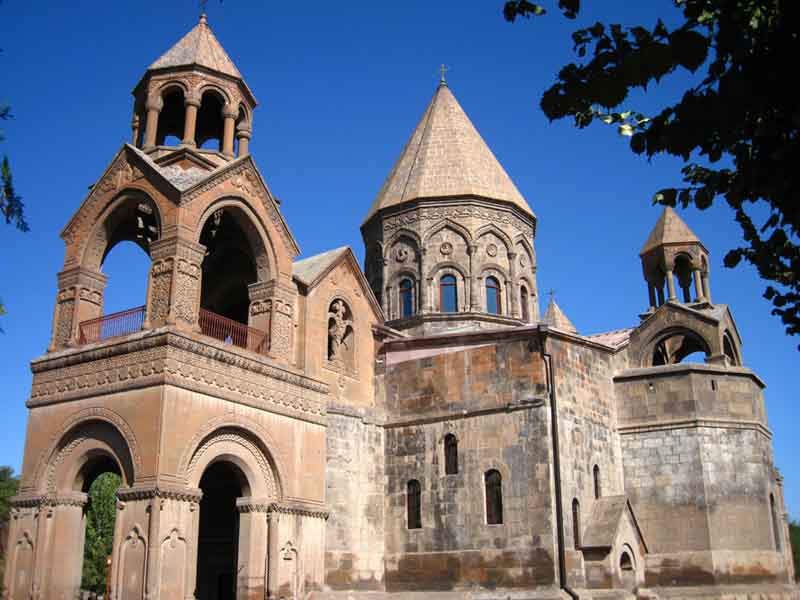Thorn Ville Church – At the rugged base of Mount Sinai, where tradition holds that Moses received the Ten Commandments, lies a monument that has endured centuries of history, spiritual devotion, and cultural transformation St. Catherine’s Monastery. The site has long served as a refuge for pilgrims, a bastion of religious knowledge, and a home to the guardians of the faith monks who have devoted their lives not only to spiritual discipline but also to the preservation of Christianity’s earliest texts and traditions.
Founded in the 6th century under the orders of Emperor Justinian I, St. Catherine’s Monastery is one of the oldest continuously inhabited Christian monasteries in the world. This ancient Christian site is more than a historical marvel it is a living symbol of endurance, peace, and guardianship of sacred tradition.
A Fortress of Faith in the Desert
The first impression of St. Catherine’s is striking: tall stone walls rise out of the arid ground like a fortress of serenity. But step inside, and the harshness of the desert gives way to a world of quiet reverence, ancient mosaics, lush gardens, and echoes of centuries-old chants. The monastery’s architecture is a fusion of Byzantine, Islamic, and Crusader influences, revealing the layers of history and interaction between cultures and faiths that have shaped this sacred space.
Among its many treasures is the Burning Bush Chapel, believe by the monks to be built on the exact site where Moses encounter God through the fiery bush. Nearby, the Chapel of St. Catherine dedicate to the martyr whose relics are kept in the monastery offers a glimpse into the Eastern Orthodox liturgical tradition that remains vibrant here today.
Read More : Catacomb Churches of Rome: Underground Sanctuaries of Early Christian Faith
Home to Priceless Christian Heritage
St. Catherine’s is not only a spiritual landmark but also a scholarly one. The monastery houses the second-largest collection of early Christian manuscripts in the world, surpassed only by the Vatican. These include Greek, Arabic, Syriac, Armenian, and Slavonic texts many handwritten and illuminated. The Codex Sinaiticus, one of the oldest known complete versions of the Bible, was discover here in the 19th century and remains a testament to the monks’ meticulous role as guardians of the faith.
The on-site library and scriptorium continue to be of immense value to theologians and historians alike. Unlike many religious sites that have become static museums, St. Catherine’s is very much alive a functioning monastic community that quietly protects and transmits spiritual knowledge in the heart of the desert.
A Symbol of Peaceful Coexistence
One of the monastery’s most remarkable features is its longstanding relationship with Islam. A mosque built within its walls though never used for formal prayer stands as a symbol of tolerance and mutual respect between faiths. Legend even holds that the Prophet Muhammad granted the monks a charter of protection, ensuring the monastery’s safety during early Islamic expansion.
This peaceful coexistence is part of what makes St. Catherine’s unique in the region despite wars, invasions, and political upheaval, the monastery has rarely been attack or looted. Its survival is a quiet testament to how sacred spaces, when rooted in humility and respect, can become sanctuaries that transcend religion and politics.
For centuries, the monks of St. Catherine’s have served as literal and spiritual guardians of the faith, not through conquest or noise, but through care, contemplation, and preservation. Their life of simplicity and discipline has allowed them to protect not only sacred texts and relics but also the broader values of compassion, hospitality, and reverence for the divine.
Read More : Retinoblastoma in Children: A Silent Threat to Vision and Life
Pilgrimage in the Modern Age
Today, visiting St. Catherine’s Monastery is both a journey and a pilgrimage. Tourists, spiritual seekers, and scholars alike travel across desert roads and mountain paths to reach its gates. Many choose to combine their visit with a hike up Mount Sinai, climbing through the night to witness sunrise from the summit a symbolic echo of divine revelation.
Though remote, the monastery has adapted in quiet ways to the modern age. Limited access to Wi-Fi, guided tours, and multi-language signage help visitors navigate the site respectfully. Still, the atmosphere remains largely unchanged: a place of silence, stone, and spiritual stillness.
For those who visit, St. Catherine’s is more than just a landmark; it is a reminder that guardians of the faith are not always warriors or revolutionaries they are often humble, unseen caretakers of the sacred, tucked away in deserts, preserving the light through darkness.


